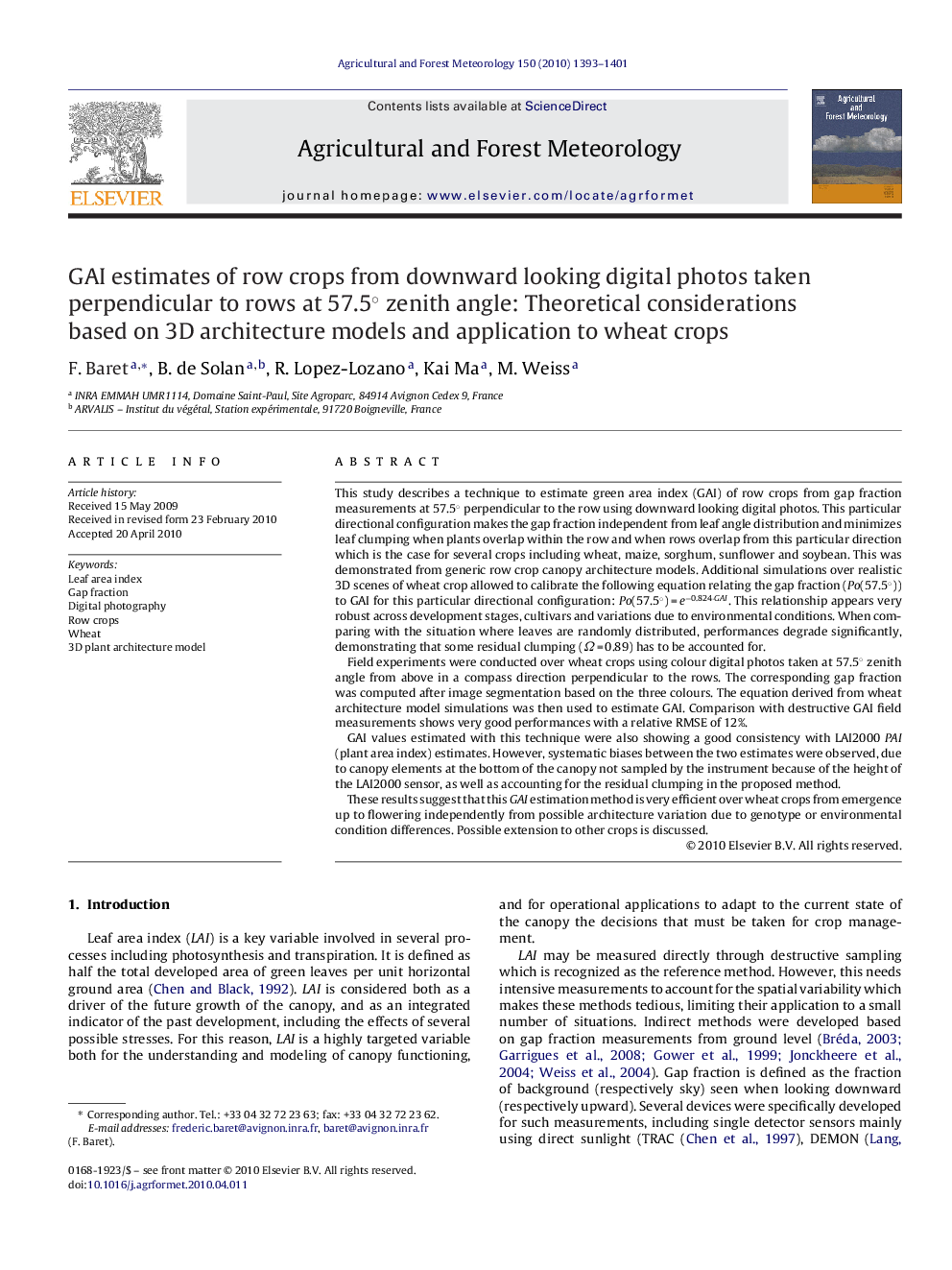| Article ID | Journal | Published Year | Pages | File Type |
|---|---|---|---|---|
| 82185 | Agricultural and Forest Meteorology | 2010 | 9 Pages |
This study describes a technique to estimate green area index (GAI) of row crops from gap fraction measurements at 57.5° perpendicular to the row using downward looking digital photos. This particular directional configuration makes the gap fraction independent from leaf angle distribution and minimizes leaf clumping when plants overlap within the row and when rows overlap from this particular direction which is the case for several crops including wheat, maize, sorghum, sunflower and soybean. This was demonstrated from generic row crop canopy architecture models. Additional simulations over realistic 3D scenes of wheat crop allowed to calibrate the following equation relating the gap fraction (Po(57.5°)) to GAI for this particular directional configuration: Po(57.5°) = e−0.824·GAI. This relationship appears very robust across development stages, cultivars and variations due to environmental conditions. When comparing with the situation where leaves are randomly distributed, performances degrade significantly, demonstrating that some residual clumping (Ω = 0.89) has to be accounted for.Field experiments were conducted over wheat crops using colour digital photos taken at 57.5° zenith angle from above in a compass direction perpendicular to the rows. The corresponding gap fraction was computed after image segmentation based on the three colours. The equation derived from wheat architecture model simulations was then used to estimate GAI. Comparison with destructive GAI field measurements shows very good performances with a relative RMSE of 12%.GAI values estimated with this technique were also showing a good consistency with LAI2000 PAI (plant area index) estimates. However, systematic biases between the two estimates were observed, due to canopy elements at the bottom of the canopy not sampled by the instrument because of the height of the LAI2000 sensor, as well as accounting for the residual clumping in the proposed method.These results suggest that this GAI estimation method is very efficient over wheat crops from emergence up to flowering independently from possible architecture variation due to genotype or environmental condition differences. Possible extension to other crops is discussed.
